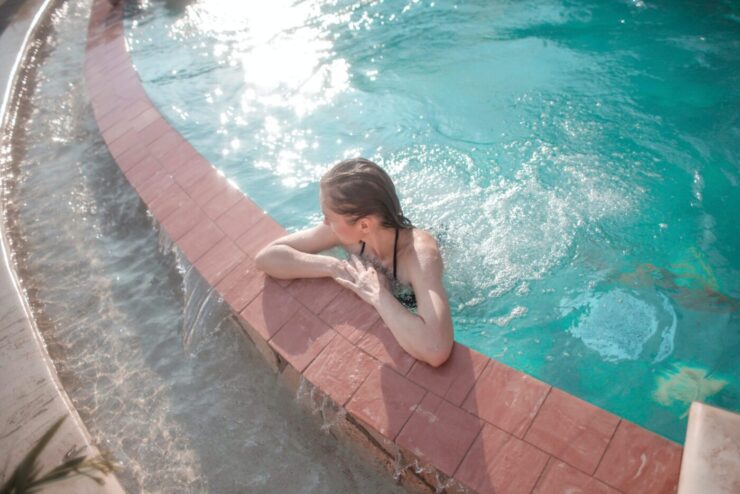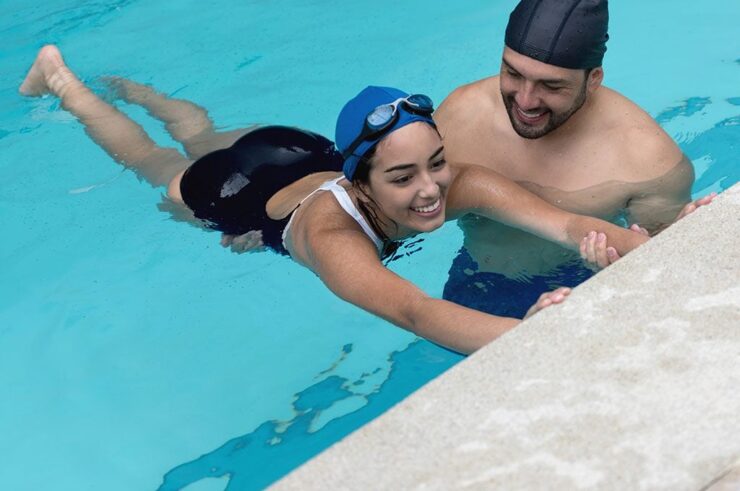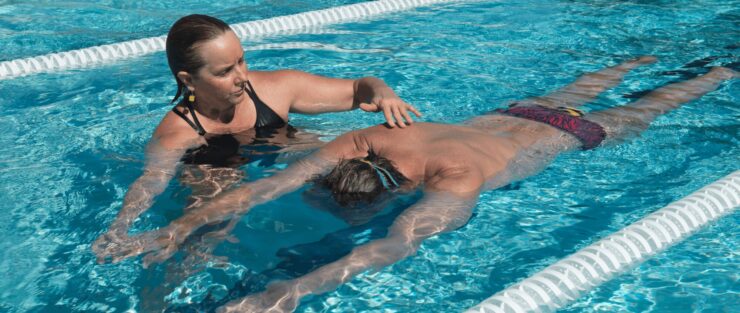Table of Contents
Water is life’s elixir, blanketing over 70% of Earth’s surface. For many, its welcoming embrace, whether in the form of a refreshing pool or the vast expanse of the sea, symbolizes serenity and leisure. Childhood memories are often filled with water balloon fights, diving into pools, or building sandcastles beside the waves.
However, juxtaposed against these delightful narratives is a darker shade of blue. For a substantial segment of the global populace, the very thought of water triggers anxiety and distress. Even as swimming stands tall as a crucial life skill—critical not just for recreation but also for survival—for many, it remains an elusive dream, shrouded in apprehension. This article aims to guide readers from the shadows of fear to the luminance of aquatic freedom.
Understanding Aquaphobia: A Deep Dive

Delving into aquaphobia requires understanding its multifaceted nature. At its core, it is not just a mere dislike for water or a childish fear of bath time. It embodies a profound, often paralyzing dread of being immersed in water or even being in proximity to it. Numerous factors sow the seeds of aquaphobia. Tragic events, such as witnessing someone struggle in water or having a personal near-drowning episode, rank high. However, the tendrils of this phobia also wind their way from childhood, absorbing cautionary tales, movies showcasing water’s menacing side, or even simple admonishments from guardians about water’s dangers. A startling statistic underlines the magnitude of this issue: nearly one-third of American adults admit to not being swimmers. A significant fraction of this number is bound by chains of fear.
The Ripple Effects of Avoiding Water

The cost of evading water transcends the obvious hazard of potential drowning. Visualize missing out on sun-kissed beach holidays, the camaraderie of pool gatherings, or the thrill of water sports like jet skiing or snorkeling. The physical toll is equally profound. Swimming offers an unparalleled blend of cardiovascular workouts and muscle toning, all under the gentle cushioning of water, minimizing strain on joints. The psychological impact, though, can be the most scarring. Feelings of inadequacy, isolation during group water activities, or a sheer sense of being ‘left out’ can gnaw at one’s self-esteem. Then, there’s the poignancy of sidelining oneself during family water outings, foregoing golden memories. The best thing to do would be to immediately search Bukit Panjang swimming lessons and start learning today.
Unshackling with Swimming: The Cascade of Benefits
At a glance, swimming appears to be about propelling oneself in water. Yet, it’s a symphony of rhythm, coordination, and strength. Each stroke exercises myriad muscle groups, bolstering physical vitality. The cardiovascular benefits rival the most intense gym sessions, and the therapeutic effect of water, combined with the body’s endorphin release during exercise, works wonders for mental well-being. But the magic isn’t confined to health. The pride, the sheer exhilaration of conquering one’s fears and mastering swimming, can be transformative, igniting the courage to challenge other life barriers.
Gearing Up: Setting Sail on the Aquatic Quest
Before immersing oneself, groundwork is paramount. Treading this path demands mental fortitude paired with tangible preparations. Clearly defined, step-by-step goals, like first mastering floating before advancing to basic strokes, provide a roadmap, eliminating the overwhelm. Drawing strength from communities—online forums, support groups, or local clubs that resonate with water fears—can be an emotional buoy. Also, gearing up appropriately, donning snug swimwear, clear goggles, and a fitting cap, can enhance the comfort quotient, making initial endeavors less daunting.
Guiding Lighthouses: Choosing the Right Instructor

Embarking on this journey is pivotal, but so is choosing the right companion. Instructors are more than just teachers; they are mentors, motivators, and for someone with aquaphobia, a pillar of trust. An ideal instructor seamlessly blends technical prowess with emotional intelligence. When scouting for swimming classes, factors like class demographics, the teacher-student ratio, and particularly, an instructor’s experience in dealing with water fears take precedence. Open dialogue about one’s apprehensions ensures a customized, sensitive teaching approach.
Baby Steps in the Big Blue: The Strategy of Gradual Exposure
Transformation isn’t about dramatic leaps but consistent, calibrated steps. Dismantling water fears is akin to layering trust. Initiating with basics, like standing in the ankle-deep kiddie pool, gradually wading into deeper sections, fosters familiarity. Personal stories often illuminate best. Take Jane, for instance. Her journey commenced with merely splashing water on her face. Today, she glides effortlessly, painting strokes across Olympic-sized pools. The methodical progression shifts the paradigm, slowly morphing dread into assurance.
Constructing the Pillar of Confidence
Confidence in water isn’t merely about skill mastery but also mental assurance. The sensation of floating, feeling water cradle the body, serves as a testament to its non-hostile nature. Regular practices, from controlled inhalation and exhalation to positive visualization, sculpt mental resilience. In moments of heightened anxiety, retreating to familiar, shallower depths, combined with grounding techniques, can reset the mental compass.
Navigating Emotional Whirlpools: Handling Anxiety

The road to conquering aquaphobia is seldom linear. It’s interspersed with crests of progress and troughs of regression. When waves of fear threaten to overwhelm, an arsenal of techniques, from deep diaphragmatic breathing to tactile grounding exercises, can stabilize emotions. Beyond self-help, opening channels of communication, discussing fears with trusted confidants, or seeking therapeutic guidance can smoothen the voyage.
Tackling Turbulence: Addressing Specific Concerns
For many, generalized water fears are accentuated by specific apprehensions. The sensation of water trickling into ears or the unnerving feeling of it rushing up one’s nostrils can amplify anxiety. Simple solutions like water-resistant earplugs, nasal clips, or acquiring skills like bubble-blowing can mitigate these concerns. Drawing inspiration from individuals like Peter, who transformed his dread of water entering his nose into mastering underwater exhalation, can illuminate the path.
Cherishing the Milestones: The Power of Acknowledgment
Each stride, whether it’s successfully submerging one’s head underwater or executing the maiden float, marks a personal victory. Recognizing these feats, possibly with small rewards or self-pampering sessions, not only uplifts spirits but also reinforces positive associations with water. Celebrations galvanize motivation, propelling individuals to set and achieve loftier milestones.
The dawning of the Aquatic Renaissance
Emerging from the cocoon of aquaphobia heralds a new beginning, unveiling an ocean of opportunities—quite literally. From indulging in routine swims to enrolling in aqua aerobics, the horizon broadens. Perhaps, even embracing water-centric vacations, be it snorkeling in the Maldives or diving in the Great Barrier Reef. Triumphing over aquaphobia is more than just mastering strokes; it signifies redefining and reclaiming life’s aquatic chapters.

